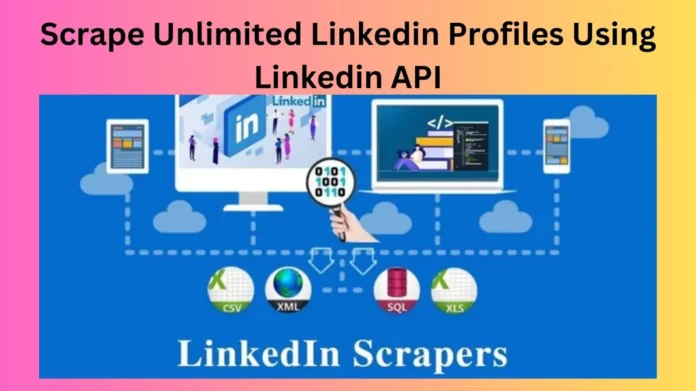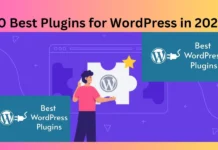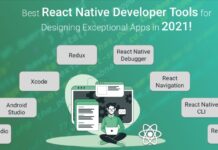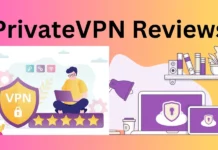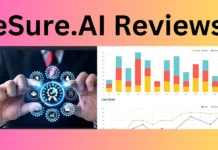In the era of data-driven decision-making, accessing valuable information from LinkedIn can be a goldmine for professionals, businesses, and researchers. However, LinkedIn’s website is not always the most efficient way to collect such data.
That’s where the LinkedIn API (Application Programming Interface) comes into play. In this article, we will explore how you can leverage the LinkedIn API to scrape unlimited LinkedIn profiles, extract valuable data, and supercharge your networking, recruitment, or research efforts.
Understanding the LinkedIn API
1: What is LinkedIn API?
LinkedIn API, or Application Programming Interface, is a set of rules and protocols that allow external programs to interact with LinkedIn’s platform. It provides developers with a structured way to access data and features, enabling them to build applications that seamlessly integrate with LinkedIn.
2: Types of LinkedIn APIs
LinkedIn offers several APIs, but for our purpose, we’ll focus on the People API, which allows you to access member profiles and their associated data. The People API is your gateway to extracting valuable information from LinkedIn.
Getting Started
1: Creating a LinkedIn Developer Account
Before you can start scraping LinkedIn profiles, you need to create a LinkedIn Developer account. This will grant you access to the LinkedIn API.
- Visit the LinkedIn Developer portal.
- Sign in with your LinkedIn credentials or create a new account if you don’t have one.
- Create a new application and provide the necessary information.
2: Obtaining API Credentials
After creating your application, LinkedIn will provide you with Client ID and Client Secret credentials. You’ll need these to authenticate your application with the LinkedIn API.
Using the LinkedIn API
1: Authentication
To scrape LinkedIn profiles, you’ll need to authenticate your application. The LinkedIn API uses OAuth 2.0 for this purpose.
- Redirect users to the LinkedIn authorization page.
- Users grant your application permission to access their data.
- Exchange the authorization code for an access token.
2: Making API Requests
Now that you have access, you can start making requests to the LinkedIn API. Here’s an example using Python:
pythonCopy code
import requests access_token = "YOUR_ACCESS_TOKEN" url = "https://api.linkedin.com/v2/me" response = requests.get(url, headers={'Authorization': 'Bearer ' + access_token}) data = response.json() print(data)
Scraping LinkedIn Profiles
1: Profile Information You Can Collect
With the LinkedIn API, you can access a wealth of information from user profiles, including:
- Basic user details (name, headline, location, etc.)
- Work experience
- Education
- Connections
- Skills
- Recommendations
- And more
2: Best Practices for Data Collection
When scraping LinkedIn profiles, it’s crucial to respect users’ privacy and LinkedIn’s terms of service. Here are some best practices to follow:
- Only collect data that is publicly visible.
- Do not use scraped data for spam, harassment, or any unethical purposes.
- Be mindful of LinkedIn’s rate limits to avoid being blocked.
Advanced Scraping Techniques
1: Pagination and Filters
LinkedIn API allows you to paginate through search results and apply various filters to narrow down your data. This is useful for targeted data collection.
2: Handling Rate Limits
LinkedIn has rate limits in place to prevent abuse. Make sure your application adheres to these limits. If necessary, consider a paid LinkedIn API subscription for higher limits.
Conclusion
Using the LinkedIn API to scrape unlimited LinkedIn profiles can be a game-changer for businesses, recruiters, and researchers. It provides a structured and ethical way to access valuable data, empowering you to make data-driven decisions and expand your network.
FAQs
FAQ 1 – Is scraping LinkedIn profiles legal?
Scraping LinkedIn profiles using the LinkedIn API is legal as long as you adhere to LinkedIn’s terms of service and respect users’ privacy. Be sure to review and comply with their policies.
FAQ 2 – What are some use cases for scraping LinkedIn profiles?
Scraping LinkedIn profiles can be used for talent recruitment, lead generation, market research, competitive analysis, and more. It’s a versatile tool for various professional needs.
FAQ 3 – Can I scrape data from all LinkedIn profiles using the API?
No, the LinkedIn API provides access to publicly available data on profiles. You won’t be able to access private information or data that users have restricted.
FAQ 4 – How do I avoid getting blocked while scraping LinkedIn profiles?
To avoid getting blocked, follow LinkedIn’s rate limits and avoid aggressive scraping. If you need higher limits, consider a paid LinkedIn API subscription.
FAQ 5 – What programming languages can I use to interact with the LinkedIn API?
You can use various programming languages, but popular choices include Python, JavaScript, and Java. Choose the one that suits your development skills and project requirements.
Scraping LinkedIn profiles using the LinkedIn API can be a valuable asset for your professional or research endeavors, provided it is done responsibly and ethically. Always prioritize user privacy and compliance with LinkedIn’s policies while harnessing the power of this tool.


